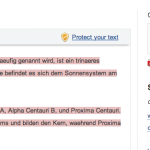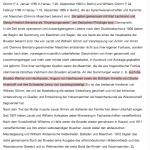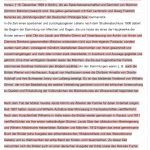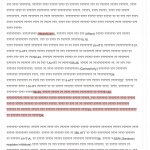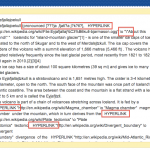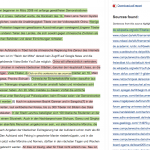Software Profile | Description | Pros & Cons | Report | Usability | Summary | Screenshots | Links
Software Profile
| ID | S13-12 |
| Product | PlagTracker |
| Company | There is no company information mentioned on the website |
| Web-Site | http://www.plagtracker.com/ |
| Software-Type | Online; also offers writing services |
| Pricing | Available as a free and as a premium version. The premium version currently costs „7.49“ a month, but no currency stated. |
| Testdate | 3 March 2013 |
Description
PlagTracker is a new system that is said to have been developed by two Ukranian students who are not named on the web site. There is also no company name given on the page. There are two versions on offer, a free one and a premium one. We were given access to the premium version, the only difference seems to be that texts that are longer than 5000 words can be checked using the premium version and that files can be uploaded. In the free version, text must be copied into a text area on the page and is cut off after 5000 words.
It was discovered during the test that PlagTracker offers editing and correcting services for a fee. Reading the fine print, it states that they offer „Rewriting [of] plagiarized content“ and thus they aid plagiarists in disguising their work. Additionally, they advertise that they have two editors who teach at Princeton University in the USA. We could not find these people on the Princeton web page and wrote to the university. They replied that both persons are unknown there, and shortly thereafter the pictures disappeared from the web page. This highly unprofessional coupling of plagiarism detection and ghostwriting led to other systems that offer writing services being removed from the test candidates in the 2013 test.
Pros & Cons
The system does offer an API so that other programs can connect with the system. They offer not only a plagiarism test, but also a grammar check in the premium version. We were not able to test how effective the grammar check is.
The system was able to find content from Google Books.
Larger texts uploaded to the system in the premium version are still not completely checked, but cut off without warning. During upload the German umlauts disappeared, and in both versions the Hebrew test cases were unable to be tested. The premium version only works with .DOC and .TXT files, and the files must be uploaded one at a time, no ZIP-archives are permitted.
In an interesting twist, PlagTracker was better at finding plagiarisms in longer texts than it was finding the same plagiarism in shorter texts.
The system was not very effective, only achieving about a third of the possible points. In addition, an original test case (#59) was flagged as being 77% plagiarized, although the two sources reported did not share more than three common words in sequence. A major false positive such as this is not acceptable for a system used in an educational setting.
Report
PlagTracker does not offer a side-by-side view. In order to view the potential source for an identified phrase, the user must click on the colored phrase. A list of all the potential sources for this phrase is then shown in a new window, now listing a percentage. The list is linked to the files, and if they are still available online the phrase in question is marked. However, even for some Wikipedia pages the system was sure that the file was no longer available and reported 0% after clicking on it, although the file was featured prominently in the list of potential sources for this phrase.
According to the web page, the reports are deleted after one week.
Usability
It was difficult to find all of the functionality on the page, as the design is very confusing. Advertising for other, non-free services that the site offers was also constantly popping up. The reports are not all that useful, and for longer potential sources there is no way to quickly locate the marked text except by excessive scrolling.
Summary
In summary, the system does not find much plagiarism. Because of the problems with non-Latin characters it is not useful for languages other than English. The connection with ghostwriting systems, however, is highly questionable and would have led to a categorization as useless for academic purposes, if it was not already categorized as such because of the excessive number of false positives and false negatives.
Screenshots
- False positive for original in PlagTracker
- Only little plagiarism identified in test case #43
- Much more plagiarism identified in test case #66 that included test case #43, surrounded by random text
- PlagTracker can not process Hebrew characters
- Errors in uploaded text in PlagTracker
- Would-be Princeton staff as editors for PlagTracker
- Report view in PlagTracker

